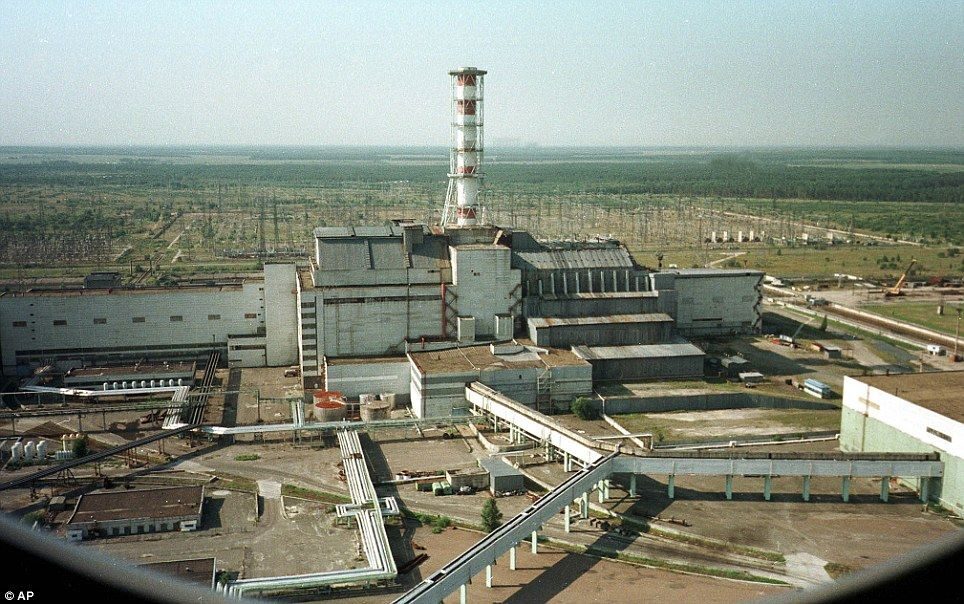
Introduction:
The Chernobyl disaster, which occurred on April 26, 1986, at the Chernobyl Nuclear Power Plant in Ukraine, is regarded as one of the most catastrophic nuclear accidents in history. This comprehensive write-up explores the disaster, its causes, immediate effects, long-term consequences, and the ongoing legacy it has left behind.
Background of the Chernobyl Nuclear Power Plant
The Chernobyl Nuclear Power Plant, located near the city of Pripyat, was equipped with four RBMK-1000 reactors. These reactors were designed in the Soviet Union and were known for their unique characteristics, including a lack of a robust containment structure. The plant began operations between 1977 and 1983, and by the time of the disaster, it was a critical part of the Soviet energy infrastructure, supplying power to the region and beyond.

Causes of the Disaster
The disaster was precipitated by a combination of design flaws in the RBMK reactor and significant operator errors during a safety test. On the night of April 25, operators began a test to determine how long the turbines would continue to provide power to the cooling pumps in the event of a power failure. However, the reactor was improperly configured, with most control rods withdrawn, leading to an unstable reactor state. At 1:23 AM on April 26, a sudden power surge occurred, resulting in a series of explosions that ruptured the reactor core and released a massive amount of radioactive material into the atmosphere.
Immediate Effects of the Explosion
The explosions at Chernobyl led to a fire that burned for several days, releasing approximately 14 exabecquerels (EBq) of radioactivity into the environment, which was several times more than that released by the atomic bombs dropped on Hiroshima and Nagasaki combined. The initial explosions killed two plant workers, while 28 emergency responders succumbed to acute radiation sickness in the following weeks. The Soviet government initially attempted to cover up the disaster, but the release of radioactive material was detected as far away as Sweden, forcing an admission of the accident.
Evacuation and Containment Efforts
In the aftermath of the disaster, a 30-kilometer exclusion zone was established around the plant. Approximately 49,000 residents of Pripyat were evacuated within 36 hours, followed by the relocation of around 360,000 people from contaminated areas over the subsequent years. Containment efforts included the construction of a concrete sarcophagus to encase the damaged reactor, although this structure was later deemed structurally unsound and required further reinforcement.
Long-Term Health and Environmental Consequences
The long-term health effects of the Chernobyl disaster are still being studied. Thousands of cases of thyroid cancer, particularly among children and adolescents exposed to radioactive iodine, have been documented. Estimates of the total number of deaths attributable to the disaster vary widely, with figures ranging from several thousand to potentially tens of thousands due to long-term radiation exposure and related illnesses. The environmental impact was also profound, with large areas of land, particularly in Ukraine and Belarus, becoming uninhabitable due to contamination. The “Red Forest,” an area near the plant, experienced significant ecological changes, and the region remains a site of ongoing scientific research into the effects of radiation on wildlife and ecosystems.
How did the Chernobyl disaster affect the environment and wildlife?
The Chernobyl disaster had a profound and lasting impact on the environment and wildlife in the affected areas. The explosion at Reactor No. 4 released a vast number of radioactive isotopes into the atmosphere, contaminating the air, soil, and water in the surrounding regions. The immediate vicinity of the Chernobyl Nuclear Power Plant was transformed into a radioactive wasteland, rendering it uninhabitable for humans. This zone, known as the Chernobyl Exclusion Zone, became a stark symbol of the environmental devastation wrought by the disaster. Flora and fauna within the exclusion zone bore the brunt of the radioactive fallout. Trees exhibited eerie mutations, standing as skeletal remnants of their former selves, while wildlife experienced abnormalities and genetic damage. Studies found that in areas with greater radiation levels, fruit trees produced fewer fruits, and the trees were significantly smaller compared to those in less contaminated areas. However, the exclusion zone has also seen an unexpected resurgence of wildlife. With the absence of human activity, the area has become a haven for animals, including the grey wolf, which is now thriving in the remains of the Chernobyl site. This suggests that the ecosystem has exhibited a remarkable ability to rebound, despite the persistent threat of radioactive contamination.The environmental impact of Chernobyl extends far beyond the exclusion zone, as the atmospheric transport of radioactive particles reached distant regions. The fallout had global implications, influencing weather patterns and contributing to the dispersion of radioactive isotopes across Europe and beyond.While the environment in the exclusion zone seems to have recovered to some extent, it still faces long-term effects, such as genetic mutations that may not surface for generations. Additionally, the threat of another release of radioactivity remains, as the integrity of the sarcophagus built around the damaged reactor continues to deteriorate.
The Chernobyl Exclusion Zone and Current Status
The Chernobyl Exclusion Zone, initially covering 30 kilometers, was later expanded to encompass more heavily contaminated areas. Although it remains largely uninhabited, the zone has become a site for scientific research and tourism, attracting “dark tourists” interested in the history of the disaster. In recent years, parts of the exclusion zone have been opened to guided tours, allowing visitors to explore the abandoned city of Pripyat and the remnants of the nuclear facility.
Legacy and Lessons Learned
The Chernobyl disaster has had a lasting impact on nuclear safety protocols worldwide. It highlighted the importance of stringent safety measures, operator training, and the need for robust containment structures in nuclear reactor design. The disaster also led to significant changes in international nuclear regulations and a reevaluation of the risks associated with nuclear energy.
FAQs
- What exactly happened during the Chernobyl disaster?
On April 26, 1986, at 1:23 AM, two explosions occurred at the fourth reactor of the Chernobyl Nuclear Power Plant, leading to the destruction of the reactor and the release of a significant amount of radioactive substances into the environment, including strontium, cesium, uranium, and plutonium. This radioactive cloud affected not only Ukraine but also spread across much of Europe. - What is the Exclusion Zone?
The Exclusion Zone is an area of approximately 2,600 square kilometers (1,003 square miles) around the Chernobyl plant that was heavily contaminated by radioactive fallout. It is divided into an industrial zone, which is the most polluted, and a biosphere reserve that serves as a buffer zone for scientific research. - Is it safe to visit the Exclusion Zone?
While some areas within the Exclusion Zone have lower levels of contamination and can be visited safely, many parts still pose significant radiation risks. Visitors are typically required to follow strict guidelines and are often accompanied by guides to ensure safety. - How did the disaster affect wildlife?
The disaster led to immediate ecological damage, with areas like the “Red Forest” suffering severe radiation exposure. However, the absence of human activity has allowed wildlife populations to rebound in the Exclusion Zone, with species such as wolves and wild boar thriving despite the lingering radiation. - What radioactive elements were released?
The explosion released over 100 radioactive elements into the atmosphere, with iodine-131, cesium-134, and cesium-137 being among the most dangerous. These elements posed significant health risks, particularly to those exposed shortly after the accident. - How many people were evacuated after the disaster?
Approximately 335,000 people were evacuated from contaminated areas following the disaster. The evacuation process began on April 27, 1986, and continued until early May. - What are the long-term health effects of the disaster?
Long-term health effects include increased rates of thyroid cancer, particularly among children exposed to radioactive iodine. Estimates of the total number of deaths attributable to the disaster vary widely, with figures ranging from several thousand to tens of thousands due to long-term radiation exposure and related illnesses. - Is Chernobyl still radioactive?
Yes, the Chernobyl site remains radioactive, and certain areas will continue to be contaminated for thousands of years. The long-lived isotopes present in the environment pose ongoing risks to human health and the ecosystem.

